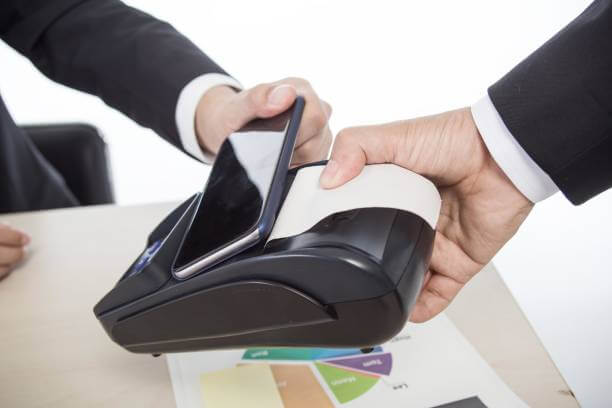
In today’s dynamic retail and hospitality landscape, the efficiency of your point-of-sale (POS) system plays a major role in how smoothly your business operates. One of the most important components of that system is your receipt printer. Whether you’re launching a startup, upgrading your existing setup, or expanding to multiple locations, the decision between wireless and wired POS printers can have lasting implications. In this guide, we explore the key differences, benefits, and drawbacks of both options to help you decide which is better suited for your business needs.
Understanding the Basics of POS Printers
POS printers are essential devices used to print transaction receipts, order tickets, customer invoices, and more. Depending on how they connect to your POS terminal, they generally fall into two categories: wired or wireless. While both types serve the same purpose, their performance, setup, flexibility, and long-term scalability can vary significantly.
Wired POS Printers – The Traditional Workhorse
Wired POS printers connect to your POS system using physical cables such as USB, Serial, or Ethernet. They have long been the preferred choice for many traditional business environments, offering consistent and fast performance with minimal technical disruptions.
Advantages of Wired POS Printers
One of the main advantages of wired printers is their dependable connection. Because they are hardwired to the POS system, they are less likely to experience connectivity issues. This makes them ideal for high-traffic businesses such as grocery stores, fast-food restaurants, and ticket booths where speed and stability are paramount.
In addition to reliability, wired printers typically offer faster data transfer rates, resulting in quicker print jobs. They also provide a secure environment since data travels through a direct connection rather than over a potentially unsecured network.
Limitations of Wired POS Printers
While wired printers offer performance benefits, they come with several limitations. The need for cables restricts how and where they can be installed. This can be an issue in small spaces or in setups that require flexibility in the layout. Running cables through walls, floors, or counters can also make installation more complex and potentially costly.
Furthermore, rearranging your workspace or scaling up your operations might require additional wiring and configuration, which adds to long-term maintenance concerns.
Wireless POS Printers The Modern Solution
Wireless receipt printers have gained significant popularity in recent years, thanks to their ease of use and flexibility. These printers connect to your POS system using wireless technologies such as Wi-Fi, Bluetooth, or cloud-based networks. They are especially useful in mobile or dynamic environments where physical connections are impractical or undesirable.
Benefits of Wireless Receipt Printers
Wireless receipt printers provide an unmatched level of convenience when it comes to installation and mobility. Because they do not rely on physical cables, they can be placed virtually anywhere within your wireless network’s range. This is incredibly useful in modern cafés, restaurants with multiple service areas, pop-up stores, and mobile food trucks.
They also promote cleaner and more aesthetically pleasing workspaces by eliminating cable clutter. The freedom to move and reorganize without needing to reconfigure wires is a major benefit for businesses that prioritize adaptability.
Scalability is another important advantage. As your business grows, it’s much easier to add more wireless printers to your network without running new cables or significantly altering your existing infrastructure.
Drawbacks of Wireless Receipt Printers
Despite their convenience, wireless receipt printers are not without their challenges. One of the most common issues is connectivity. In areas with weak Wi-Fi signals or a crowded network environment, you may experience intermittent printing delays or disconnections.
Another consideration is setup complexity. While many wireless printers are designed to be user-friendly, initial network configuration can still be daunting for users unfamiliar with networking. Additionally, some wireless printers may have slightly slower response times compared to wired printers, which could affect performance during peak hours.
Lastly, security is a concern. Wireless data transmission must be encrypted to prevent unauthorized access. Businesses need to ensure their networks are secure and regularly updated to avoid potential breaches.
Comparing Wireless and Wired POS Printers
Choosing between wireless and wired POS printers depends on several key factors including your business model, physical layout, speed requirements, and budget. Here’s how they stack up in core areas:
Installation and Setup
Wired printers require more involved installation, often needing dedicated cable management and compatible ports. Once installed, they’re generally plug-and-play with minimal setup afterward.
Wireless receipt printers offer easier physical setup, especially in locations where cable routing is inconvenient or impossible. However, they do require wireless network configuration, and may occasionally need troubleshooting if the connection drops.
Performance and Speed
Wired printers are known for their superior print speeds and low latency. They’re excellent for environments where every second counts. While wireless printers have improved considerably, they may experience slight delays in high-demand scenarios, particularly when many devices are connected to the same network.
Flexibility and Mobility
Wireless receipt printers clearly win in terms of flexibility. You can install or move them as needed without rewiring or reconfiguring your entire POS system. Wired printers are best suited for fixed setups where devices remain stationary.
Cost and Scalability
Wired printers often come at a lower initial cost. However, wiring, installation, and future modifications can drive up expenses. Wireless receipt printers may have a higher price tag upfront, but they reduce the need for infrastructure investment and are easier to scale as your business grows.
Maintenance and Reliability
Wired printers are low maintenance from a connectivity standpoint. Their issues usually stem from physical wear or damage to cables. Wireless printers require monitoring of network health and occasional firmware updates to maintain performance.
Which POS Printer Is Best for Your Business?
The right printer for your setup depends on your business needs, goals, and physical space.
For retail stores with fixed cashier stations, wired printers are still a solid and dependable option. They provide consistent print speeds and require less network troubleshooting.
Restaurants and cafés benefit significantly from wireless receipt printers, particularly in environments with multiple tables, counters, or kitchen stations. The ability to print receipts or kitchen tickets remotely from handheld devices streamlines operations.
Pop-up shops, food trucks, and mobile businesses should lean heavily toward wireless options. They enable you to operate in diverse environments without depending on power outlets or Ethernet connections.
Larger businesses with multiple departments or POS terminals may benefit from a hybrid solution. Wired printers can support high-volume tasks in the back office or kitchen, while wireless printers manage customer-facing interactions at various service points.
Future Trends in POS Printing
The future of point-of-sale printing is increasingly focused on wireless, mobile, and cloud-based systems. Wireless receipt printers are at the forefront of this shift, offering the flexibility needed for tablet-based POS systems and remote transactions.
Emerging features like cloud printing, NFC (Near Field Communication) pairing, and cross-platform compatibility are becoming standard. These innovations are driving a move toward streamlined, efficient POS environments that cater to both business needs and customer expectations.
Wired printers are also evolving, with newer models offering hybrid connectivity, energy efficiency, and more compact designs to remain relevant in this fast-changing landscape.
FAQs
Are wireless receipt printers secure for processing transactions?
Yes, most modern wireless receipt printers support encrypted connections, making them safe for handling transactional data. It’s important to secure your network and regularly update printer firmware.
Can wireless receipt printers work with any POS system?
Most wireless printers are compatible with popular POS platforms, but it’s essential to confirm compatibility before purchasing. Check whether the printer supports your system’s operating software and connection type.
What if my wireless printer loses its connection?
If a wireless receipt printer loses connection, check the signal strength and restart both the printer and router. For areas with weak signals, a Wi-Fi extender or dedicated printer network may help.
Can I combine both wired and wireless printers in the same POS setup?
Absolutely. Many businesses use a mix of both to maximize performance and flexibility. For instance, use wired printers in kitchens and wireless receipt printers at customer service counters.
Do wireless printers require more power than wired ones?
Not necessarily. Many wireless printers are designed to be energy efficient. However, battery-powered models may need frequent recharging, depending on usage patterns.
Conclusion
The choice between wireless and wired POS printers ultimately comes down to your business environment, operational needs, and growth plans. Wired printers provide rock-solid reliability and fast performance, making them a staple in many traditional setups. On the other hand, wireless receipt printers offer the flexibility, scalability, and modern features that today’s mobile and multi-location businesses demand. In many cases, a hybrid approach offers the best of both worlds, providing performance where it’s needed and mobility where it matters most. To explore high-quality wireless receipt printers designed for modern business needs, consider HPRT, a trusted name in innovative POS printing solutions.
Author Bio:
Alex Chen is a retail technology specialist with in-depth expertise in HPRT’s innovative POS products. He shares practical insights to help businesses optimize their operations using the latest printing technology. Visit HPRT to learn more and explore advanced receipt printer solutions.
